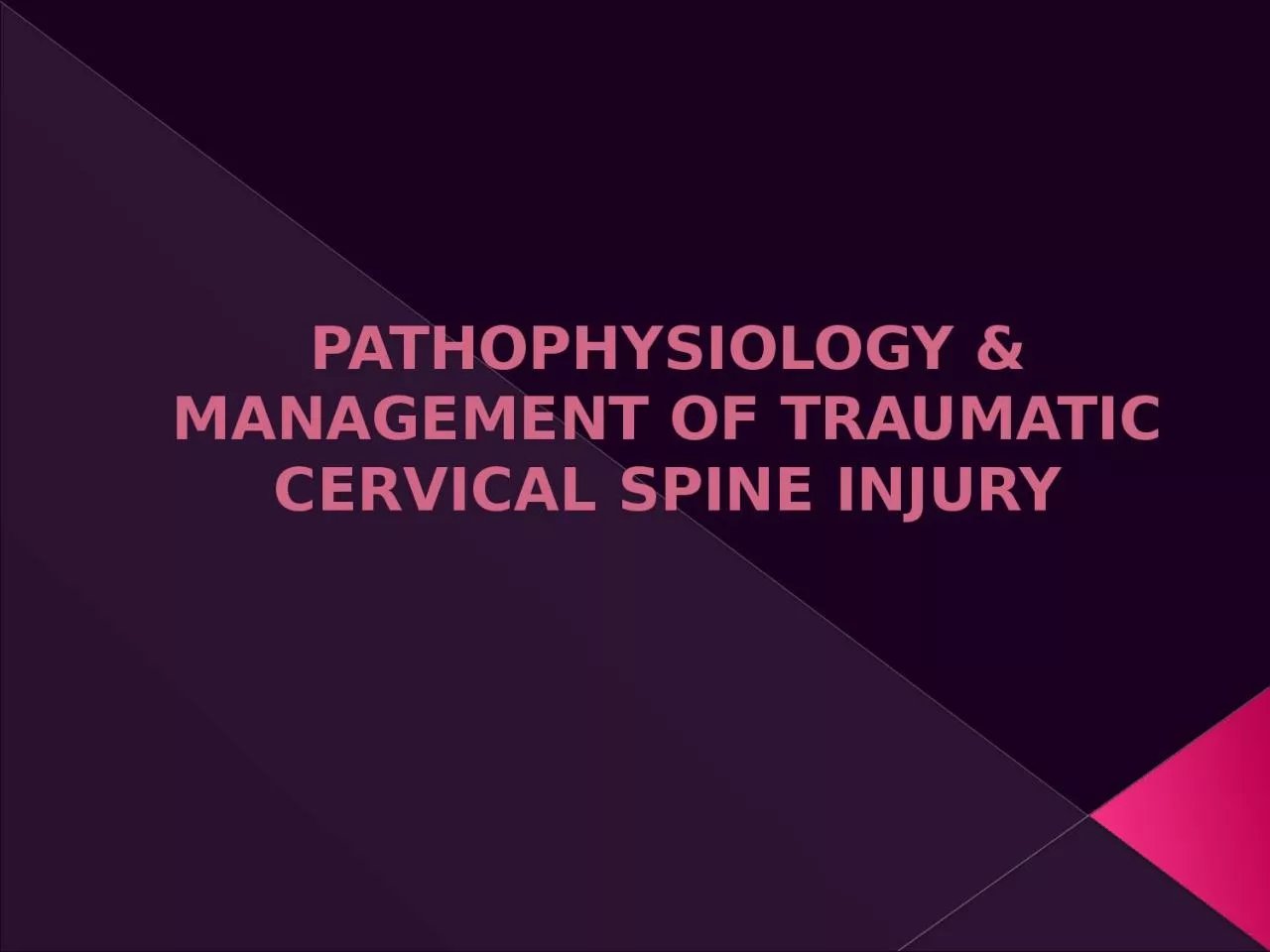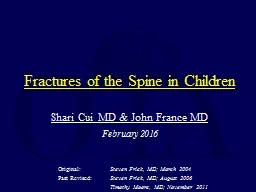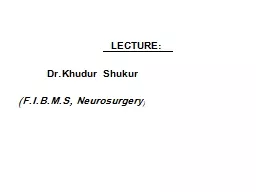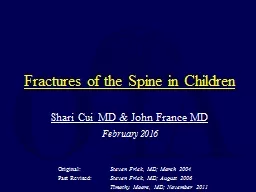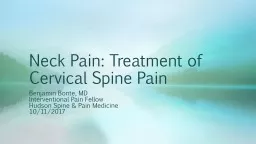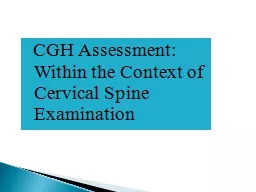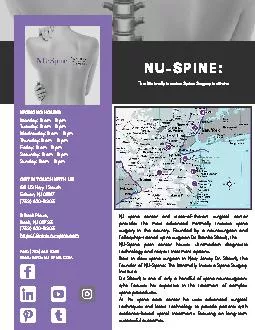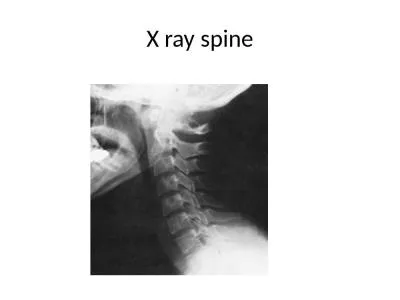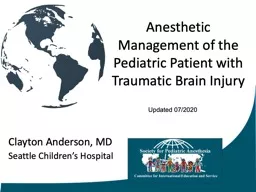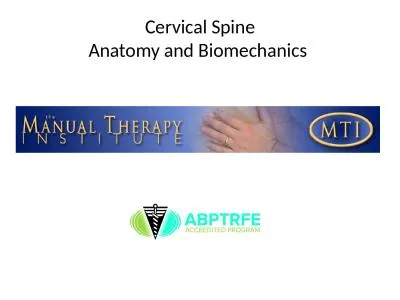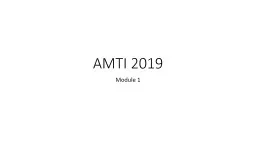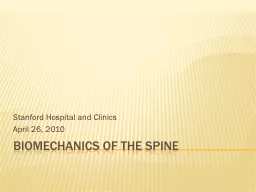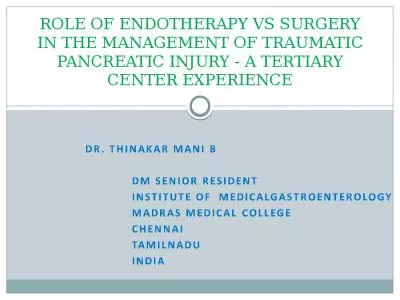PPT-PATHOPHYSIOLOGY & MANAGEMENT OF TRAUMATIC CERVICAL SPINE INJURY
Author : eleanor | Published Date : 2024-03-15
PATHOPHYSIOLOGY 25 cervical trauma occurs in the upper cervical spine Most commonly involving the axis comprising up to 20 of cervical spine injuries Atlas fractures
Presentation Embed Code
Download Presentation
Download Presentation The PPT/PDF document "PATHOPHYSIOLOGY & MANAGEMENT OF TRAU..." is the property of its rightful owner. Permission is granted to download and print the materials on this website for personal, non-commercial use only, and to display it on your personal computer provided you do not modify the materials and that you retain all copyright notices contained in the materials. By downloading content from our website, you accept the terms of this agreement.
PATHOPHYSIOLOGY & MANAGEMENT OF TRAUMATIC CERVICAL SPINE INJURY: Transcript
Download Rules Of Document
"PATHOPHYSIOLOGY & MANAGEMENT OF TRAUMATIC CERVICAL SPINE INJURY"The content belongs to its owner. You may download and print it for personal use, without modification, and keep all copyright notices. By downloading, you agree to these terms.
Related Documents

